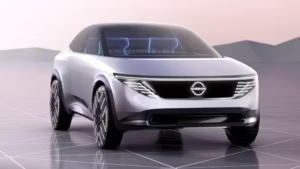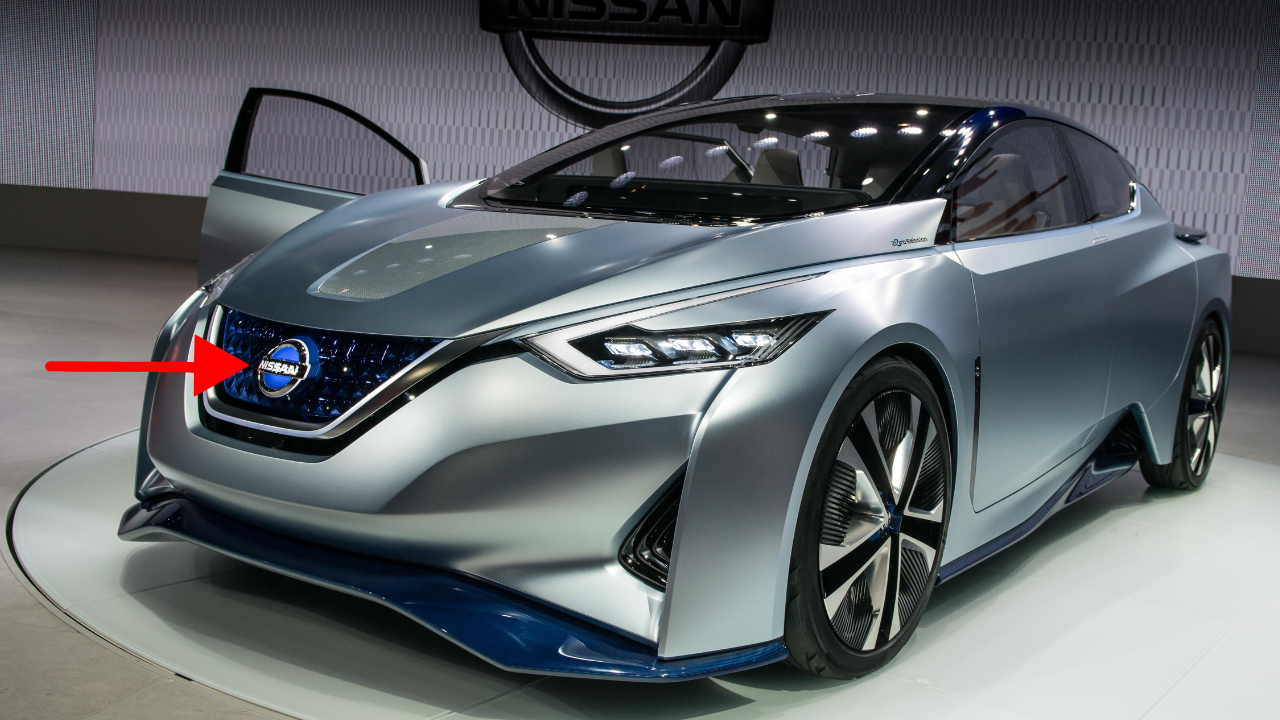Nissan has redefined its pioneering electric vehicle with the launch of the third-generation 2026 Nissan Leaf, unveiled on June 17, 2025. Transitioning from its iconic hatchback roots to a sleek, subcompact crossover, the new Leaf boasts a significantly enhanced range of up to 488 kilometers (303 miles) on select trims, a modernized interior, and compatibility with Tesla’s Supercharger network via a North American Charging Standard (NACS) port. Built on the CMF-EV platform shared with the Nissan Ariya, the 2026 Leaf combines aerodynamic efficiency, advanced technology, and practical upgrades to reclaim its place in the competitive electric vehicle (EV) market. This article explores the Leaf’s key features, performance specs, design evolution, and its positioning in markets like Canada, the U.S., and Australia, where it will go on sale in fall 2025.
A New Era for the Nissan Leaf
Introduced in 2010 as the world’s first mass-market EV, the Nissan Leaf revolutionized electric mobility, earning accolades like the 2011 World Car of the Year. However, its second generation, launched in 2017, struggled to keep pace with competitors like the Tesla Model 3 and Hyundai Kona Electric due to limited range (341 km max) and slower charging speeds. The third-gen Leaf addresses these shortcomings, offering a bold redesign and significant performance upgrades. Nissan’s design team drew inspiration from the 2021 Chill-Out concept, creating a crossover with a fastback silhouette, a drag coefficient of 0.26, and a contemporary aesthetic that blends Japanese heritage with futuristic flair.

The Leaf’s transformation into a crossover reflects consumer demand for SUV-like styling, positioning it below the larger Ariya in Nissan’s EV lineup. Despite its taller profile, the Leaf is shorter (4,404 mm vs. 4,480 mm), lower (1,557 mm vs. 1,565 mm), and wider (1,811 mm vs. 1,790 mm) than its predecessor, with a slightly reduced wheelbase (2,690 mm). This compact footprint enhances maneuverability, with a turning radius reduced by 0.1 meters, making it ideal for urban environments.
Powertrain and Range Improvements
The 2026 Leaf offers two liquid-cooled lithium-ion battery options: a 53 kWh pack for the base S trim and a 75 kWh pack for the S+, SV+, and Platinum+ trims. The larger battery delivers an estimated range of 488 km (303 miles) for the S+, 464 km (288 miles) for the SV+, and 417 km (259 miles) for the Platinum+, a significant leap from the 2025 Leaf SV+’s 341 km. The base S trim’s range is yet to be confirmed but is expected to exceed the current 240 km.
The powertrain features a new 3-in-1 electric motor (integrating motor, inverter, and reducer), which is 10% smaller yet more powerful and efficient than the previous generation. The S trim produces 174 hp (130 kW) and 254 lb-ft of torque, while the S+, SV+, and Platinum+ trims deliver 214 hp (160 kW) and 261 lb-ft. A multi-link rear suspension with 66% increased lateral stiffness enhances handling, and noise reduction measures make the cabin two decibels quieter at 50 km/h compared to the second-gen Leaf.
Charging capabilities have also been upgraded. The Leaf now supports 150 kW DC fast charging, reducing the 10-80% charge time to 35 minutes from 45 minutes. It features dual charging ports: a J1772 port for Level 2 home/work charging and an NACS port for access to over 20,000 Tesla Superchargers. A first for Nissan, the “Plug & Charge” system allows seamless charging at compatible stations without an app or card. An enhanced NissanConnect app enables remote monitoring, journey planning, and charger location services.
|
Trim |
Battery (kWh) |
Power (hp/kW) |
Torque (lb-ft) |
Estimated Range (km) |
Charging Time (10-80%) |
|---|---|---|---|---|---|
|
S |
53 | 174 / 130 | 254 |
TBD (>240) |
~35 min (150 kW) |
|
S+ |
75 | 214 / 160 | 261 | 488 |
35 min (150 kW) |
|
SV+ |
75 | 214 / 160 | 261 | 464 |
35 min (150 kW) |
|
Platinum+ |
75 | 214 / 160 | 261 | 417 |
35 min (150 kW) |
Design and Aerodynamics
The 2026 Leaf’s exterior is a radical departure from its predecessors, adopting Nissan’s Timeless Japanese Futurism design language. Key features include scythe-shaped LED headlights, 3D holographic taillights inspired by the Nissan Z, and flush, motorized door handles. The rear tailgate creates an airfoil effect, contributing to the 0.26 drag coefficient, with European models achieving 0.25 via unique wheel and mirror designs. Eight body colors, including Seabreeze Blue Pearl and Coulis Red Pearl with black roofs, enhance customization. The Platinum+ trim offers 19-inch alloy wheels, while the S and S+ use 18-inch steel wheels.
Aerodynamic efficiency is further improved by an active grille shutter, a flat underbody, and wheel air deflectors. The optional illuminated Nissan logo and a subtle rear spoiler add visual flair, while the taillights incorporate a “ni-san” motif (two horizontal, three vertical rectangles) as a nod to the brand’s Japanese heritage. These elements make the Leaf Nissan’s most aerodynamic vehicle to date.
Interior and Technology Upgrades
The Leaf’s interior has been transformed into a premium, lounge-like space. A flat floor and redesigned center console increase legroom, while slimmer front seats improve rear knee room. The Platinum+ trim features a dimmable electrochromic panoramic roof—a segment first—allowing drivers to adjust opacity without a physical sunshade, preserving headroom. A 10-speaker Bose Personal Plus audio system with headrest speakers is standard on higher trims, and 64-color ambient lighting adds sophistication.
The dashboard hosts dual digital displays: 12.3-inch screens for S and S+ trims, and 14.3-inch screens for SV+ and Platinum+ trims. All models support wireless Apple CarPlay and Android Auto, while higher trims include Google built-in services (Maps, Assistant, Play Store). A physical climate control bar ensures user-friendly operation, and a push-button gear selector frees up console space. The NissanConnect Services app offers remote battery monitoring and cabin preconditioning. Cargo capacity is 437 liters (20 cubic feet) behind the second row, expanding to 55.5 cubic feet with seats folded, with a Divide-N-Hide underfloor storage system.
Safety features include Nissan’s Safety Shield 360 (automatic emergency braking, blind-spot intervention, lane departure prevention) and ProPILOT Assist for semi-autonomous highway driving. Vehicle-to-Load (V2L) capability, standard on the Platinum+, allows the Leaf to power appliances via a dedicated outlet in the boot.
Market Positioning and Availability
The 2026 Leaf will be assembled in Japan’s Tochigi plant for Canada, the U.S., and Australia, and in Sunderland, UK, for Europe, with batteries supplied by AESC. It will launch in fall 2025, with pricing yet to be announced. Estimates suggest a starting price near $30,000 USD (~C$50,000), though production in Japan may exclude it from U.S. and Canadian federal EV tax credits due to tariffs. In Australia, where the current Leaf starts at $50,990 AUD, the new model is expected to be pricier but competitive with the Hyundai Kona Electric ($54,000 AUD).
Nissan anticipates Europe to account for 60% of global sales, Japan 20-30%, and North America as a secondary market due to tariff uncertainties. The Leaf’s 488 km range and NACS compatibility position it strongly against rivals like the Hyundai Kona Electric (420 km) and Toyota Corolla Cross Hybrid (EPA range unavailable). However, its front-wheel-drive layout and lack of a dual-motor option may limit appeal compared to all-wheel-drive EVs like the Tesla Model Y.
Performance and Efficiency
The Leaf’s new powertrain and thermal management system enhance efficiency. The battery uses waste heat from the motor and charger to maintain optimal temperature, improving cold-weather performance, as tested in northern Quebec. A standard heat pump and battery heater ensure cabin warmth and faster charging in winter. The Leaf’s 0-100 km/h acceleration times are undisclosed, but its 214 hp and 261 lb-ft suggest improved responsiveness over the 2025 model’s 147 hp. Regenerative braking paddles on higher trims allow customizable energy recovery.
Competitive Landscape
The 2026 Leaf competes in a crowded EV market. Its 488 km range surpasses the Hyundai Kona Electric (420 km) and Chevrolet Bolt EUV (400 km) but falls short of the Tesla Model Y Long Range (533 km). The NACS port and Plug & Charge functionality give it an edge in charging convenience, though its single-motor setup may deter buyers seeking all-wheel-drive performance. Pricing will be critical, as competitors like the Kona Electric ($34,010 USD) and Volkswagen ID.3 (est. $35,000 USD) offer compelling value. Nissan’s focus on affordability and practicality aims to recapture the Leaf’s mass-market appeal.
Consumer and Industry Reactions
Posts on X reflect excitement for the Leaf’s redesign, with users like @sydney_ev praising its 488 km range and Tesla Super spelt charger compatibility, though some, like @ckcho_na, prefer the second-gen’s V-motion design. Industry outlets like The Car Guide and Drive Tesla commend the Leaf’s transformation but note pricing and tariff challenges could impact North American sales. The Leaf’s global debut has sparked optimism, with Nissan positioning it as a family-friendly, efficient crossover for urban and suburban drivers.
Looking Forward
The 2026 Nissan Leaf marks a bold reinvention, transitioning from a dated hatchback to a stylish, efficient crossover with up to 488 km of range, advanced charging, and a premium interior. Its CMF-EV platform, NACS compatibility, and features like the dimmable panoramic roof position it as a competitive option in the subcompact EV segment. While pricing and tariff uncertainties loom, the Leaf’s upgrades address past criticisms, making it a compelling choice for EV buyers in Canada, the U.S., and Australia. For the latest updates, visit nissan.com.au or nissanusa.com as the fall 2025 launch approaches.
